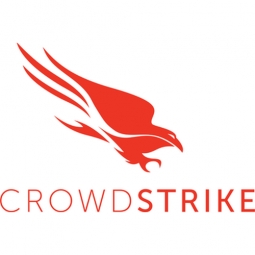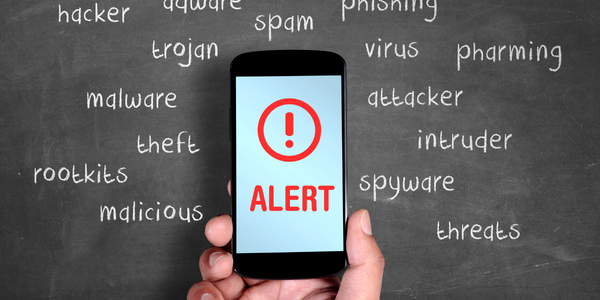Illinois State Treasurer Uses CrowdStrike to Protect Public Funds and Deliver a “Security First” Strategy

公司规模
Large Corporate
地区
- America
国家
- United States
产品
- Falcon Complete™
- Falcon Device Control™
- Falcon Discover™
- Falcon Insight™
- Falcon Overwatch™
- Falcon Prevent™
- Falcon Spotlight™
- Falcon X™
技术栈
- Cloud-native platform
- Lightweight agent
实施规模
- Enterprise-wide Deployment
影响指标
- Cost Savings
- Productivity Improvements
- Customer Satisfaction
- Environmental Impact Reduction
技术
- 网络安全和隐私 - 云安全
- 网络安全和隐私 - 端点安全
- 网络安全和隐私 - 网络安全
适用功能
- 商业运营
用例
- 入侵检测系统
服务
- 网络安全服务
- 系统集成
关于客户
Founded in 1818, the Illinois State Treasurer’s Office is responsible for managing the state’s financial portfolio, which includes approximately $38 billion in local and state funds, retirement accounts, and college savings plans. The office is dedicated to protecting these funds and ensuring their efficient management. Recently, the office underwent a significant overhaul of its aging IT environment, reducing the server count by over 90%, cutting IT-related costs by 40%, and decreasing carbon emissions by 27 tons. This transformation was part of a broader digital transformation strategy aimed at moving towards a predominantly cloud-based infrastructure. The office's commitment to a 'security first' strategy is evident in its efforts to protect its new infrastructure and ensure the safety of public funds.
挑战
The Illinois State Treasurer’s Office faced significant challenges in securing its digital assets due to limited funding, which often resulted in an outdated, inefficient, and uncoordinated IT environment. The complexity of financial compliance requirements further strained resources, while legacy security tools generated excessive false positives and low-priority alerts that overwhelmed the security teams. Additionally, the magnitude of state funds under management, often exceeding tens of billions of dollars, made it a compelling target for cybercriminals. The existing security solution from a state supplier was inadequate, generating nearly 30,000 false positives a day, which quickly overwhelmed the in-house team.
解决方案
The Illinois State Treasurer’s Office implemented the CrowdStrike Falcon® platform to secure its digital assets and support its transition to a cloud-based infrastructure. The platform was chosen for its ability to handle complexity and provide a 'single pane of glass' experience for security professionals. The CrowdStrike solution, with its cloud-native platform and lightweight agent, was implemented with minimal impact on business operations, ensuring a seamless transition for end users. The platform offered enhanced visibility and threat intelligence, providing a comprehensive view of potential attacks across the entire environment. A rapid proof of concept (POC) with CrowdStrike solutions demonstrated significant improvements in resource utilization and team effectiveness, leading to the immediate replacement of incumbent tools. The solution's ability to deliver 360° threat visibility and protection across a complex hybrid environment was a key factor in its selection.
运营影响
数量效益

Case Study missing?
Start adding your own!
Register with your work email and create a new case study profile for your business.
相关案例.

Case Study
Protecting a Stadium from Hazardous Materials Using IoT2cell's Mobility Platform
There was a need for higher security at the AT&T Stadium during the NFL draft. There was a need to ensure that nuclear radiation material was not smuggled inside the stadium. Hazmat materials could often be missed in a standard checkpoint when gaining entry into a stadium.

Case Study
Visual Management on Gas Tankers
Gas tankers are massive ships with a limited crew, making them extremely difficult to monitor. Video surveillance systems, which use a large number of widely distributed devices, and fire prevention systems are both crucial elements of a gas tanker monitoring system.The system used for this application is a legacy analog CCTV surveillance system that is completely independent from the main monitor and control SCADA system. With this system, the administrator responds to an event by first using the SCADA system to locate the event, and then accesses the appropriate surveillance camera from the CCTV system to view the location. The goal is to upgrade the system so that only one step is required. This is done by integrating the CCTV surveillance system into the SCADA system, in which case the surveillance system becomes a SCADA sub-system, making centralized control and monitoring possible.System Requirements- Upgrade to an IP video surveillance system for integration with the existing SCADA system- Live video display (through the SCADA system)- Enable events in the SCADA system to automatically trigger live video display- All the devices need to be of rugged design and have an anti-explosion defense

Case Study
Leveraging Graph Technology for Enhanced Cybersecurity: A Case Study on MITRE's CyGraph
MITRE, a federally-funded, not-for-profit company that manages seven national research and development laboratories in the United States, was grappling with the challenge of managing an influx of cybersecurity data. The constant changes in network environments were impacting the security posture of U.S. government agencies. Intrusion alerts, anti-virus warnings, and seemingly benign events like logins, service connections, and file share access were all potentially associated with adversary activity. The cybersecurity researchers at MITRE needed to go beyond rudimentary assessments of security posture and attack response. This required merging isolated data into higher-level knowledge of network-wide attack vulnerabilities and mission readiness. The challenge was not the lack of information, but the ability to assemble disparate pieces of information into an overall analytic picture for situational awareness, optimal courses of action, and maintaining mission readiness. The team also struggled with fully comprehending a given security environment and mapping all known vulnerabilities.

Case Study
EMC's Transition to SMS for Real-Time IT Alerts
EMC, a global leader in cloud computing, data storage, and data virtualization, was struggling with an inefficient and slow method of alerting its 68,000 employees about IT system updates. The traditional method involved drafting an email, proofing it, getting approval from several stakeholders, and finally sending it. This process was not only labor-intensive but also unreliable as it depended on the user's email being unaffected and the user actually opening and reading the email. After sending 1.2 million alert emails in a single month, EMC decided to find a more efficient and immediate way to alert employees. The challenge was to find a solution that was not only faster and less labor-intensive but also globally available and scalable to EMC's needs.

Case Study
Mitigating Cybersecurity Risks in Manufacturing: A Case Study of Jacobs Douwe Egberts
Jacobs Douwe Egberts (JDE), a global coffee and tea company, faced a significant challenge in the wake of a malware incident in 2017 that caused a computer outage across Mondelez’s global operations, resulting in losses of €100M. This incident served as a wake-up call for JDE to implement a robust cybersecurity program to protect its operational technology (OT), including the industrial control system (ICS) environment across its factories worldwide. The advent of Industry 4.0 has led to increased interconnectivity in manufacturing environments, making them more vulnerable to cyberattacks. Traditional IT security measures were no longer sufficient to protect JDE's manufacturing operations. The company needed a comprehensive overview of all cybersecurity risks and vulnerabilities across its factories, including all operational technology computing systems used to manage the entire industrial operation.

Case Study
Modernizing the Angolan Government Agency Voter ID Program with IoT
The Angolan government agency was seeking to upgrade its voter ID system ahead of the elections in Q3 2017. The aim was to increase the number of citizens eligible to vote by issuing voter IDs in a short time frame. The existing voter ID printing system needed to be replaced with a solution that reduced costs significantly by providing mobility and streamlining operational processes. The key selection criteria included a faster throughput secure issuance printer solution, a de-centralized secure issuance solution to increase the number of citizens enrolled, a Wi-Fi based secure issuance printing solution for increased convenience, improved reliability of the printing solution, a lightweight, easy-to-use portable solution for collecting citizens’ data and issuing voter IDs for citizens residing in remote areas, and high levels of security to combat fraud and minimize the number of counterfeit voter IDs.






